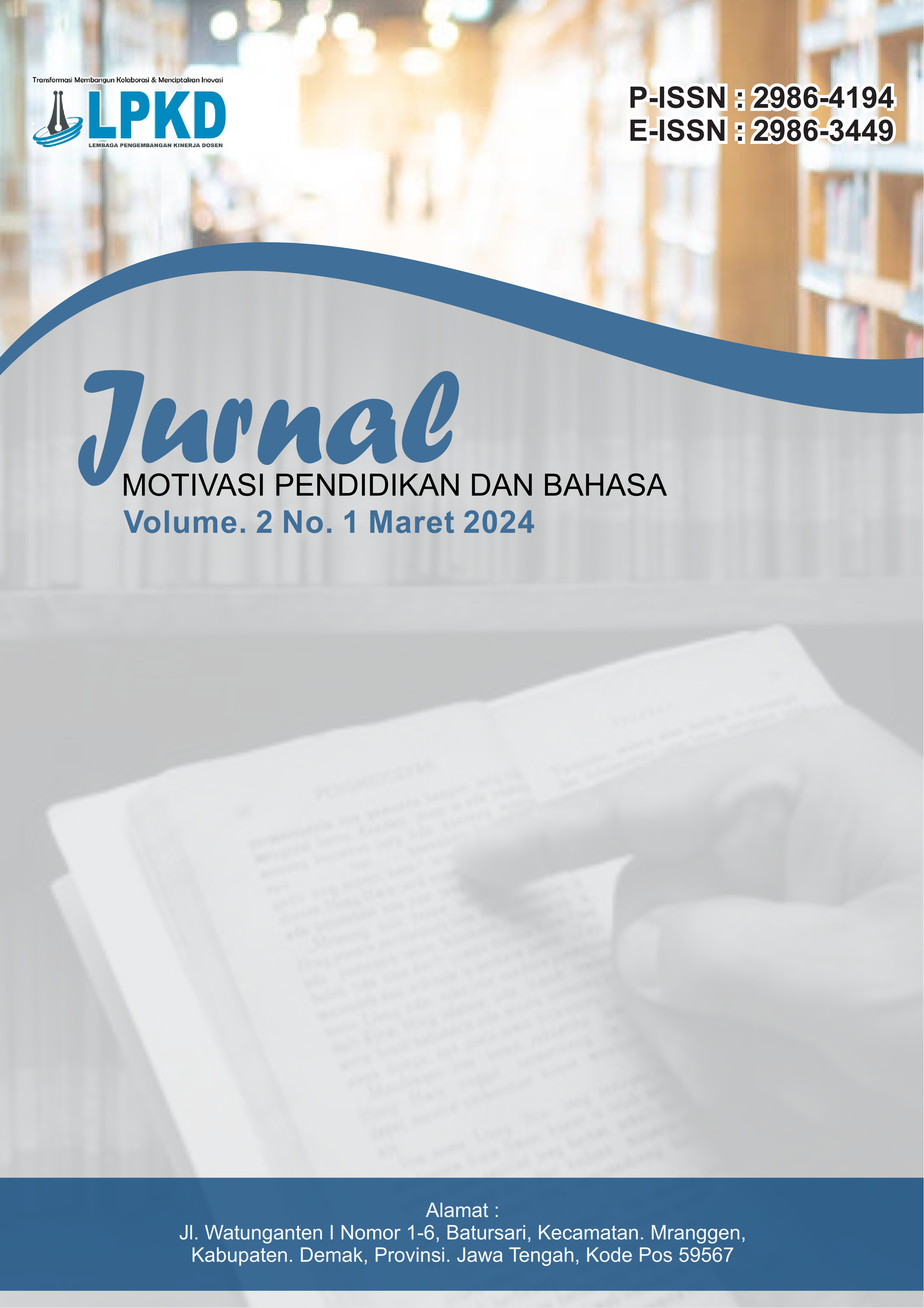An Analysis of Students’ Errors on the Use of Passive Voice in Writing Recount Text
DOI:
https://doi.org/10.59581/jmpb-widyakarya.v2i1.2685Keywords:
Error analysis, Grammar, Passive Voice, Recount textAbstract
Researchers often find that there are students' error' in using passive on writing texts. Applying proper grammar in writing recount text is usually a problem for students. The purpose of this study was to clasify the errors and the causes of English Literature students in using passive voice on their recount text writings at Pamulang University. Qualitative descriptive method was used to approach the data. The population in this study are about 200, third semester students of Unpam English Literature Department. Researchers take 20 students to represent the population sample with purposive sampling technique. The instrument is students’ recount texts. Researchers ask students to write down their unique experiences. Researchers collect data, identify data, classify passive voice errors and explain the causes of students’s errors in using passive voice on recount text. Students’ errors are classified into four categories based on the types of errors, they are omission errors, addition errors, misformation errors, and misordering errors. After finishing this research, researchers are expected to enrich lecturer and student knowledge and improve students' ability in useing passive sentences in writing recount text, and to find out the types and the causes of students' errors in using passive sentences in writing recount texts.
References
Anderson, Mark and Kathryn Anderson. 1988. Text Types in English Vol. 3. South Yara: Macmillan Publisher.
Anonymous. 2013. Silabus SMP Dharma KaryaUT tahun pelajaran 2013/2014. Jakarta: Depdiknas.
Buzan, Tony. 2005. Buku Pintar Mind Map. Jakarta: PT. Gramedia.
Brown, H. Douglas. 2007. Teaching by Principles: An Interactive Approach Language Pedagogy 3rd edition. New York: Longman.
Dietsch, Betty Mattix. 2003. Reasoning & Writing Well A Rhetoric, Research Guide, Reader, and Handbook Third Edition. New York: McGraw-Hill Companies.
Harmer, Jeremy. 2004. How to Teach Writing. Essex: Longman.
Kirszner, Laurie G. and Stephen R. Mandell. 1983. Patterns for College Writing. New York: St. Martin’s Press.
Legget, Glenn. et al. 1988. Handbook for writers Tenth Edition. New Jersey: Prantice Hall. Inc.
McCrimmon. 1984. Writing With a Purpose. Boston: Houghton Mifflin Company.
Meyers, Alan. 2005. Gateways to Academic Writing: Effective Sentences, Paragraphs and Essays. New York: Pearson Education, Inc.
Mukarto, et al. 2007. English on Sky 1. Jakarta: Penerbit Erlangga.
Nunan, David. 1989. Designing Task for The Communication Classroom. New York: Bell & Bain ltd.
Reinking, James A. and Andrew W. Hart. 1986. Strategies For Successful Writing. New Jersey: Prentice Hall.
Sumarsono, Sigit. 2011. Statistika Pendidikan (Statistika Terapan Dalam Alur Pendidikan Bahasa). Jakarta: Uhamka Press.
Windura, Sutanto. 2013. 1st MIND MAP untuk siswa, guru dan orang tua. Jakarta: PT. Gramedia.
Wishon, George E. and Julia M. Burks. 1980. Let’s Write English Revised Edition. New York: Atlantis Publisher Inc.
Zemach, Dorothy E. 2005. Paragraph Writing From Sentence to Paragraph.Oxford: Macmillan Publishers.
Downloads
Published
How to Cite
Issue
Section
License
Copyright (c) 2024 Nurdin Nurdin, Ismi Adinda

This work is licensed under a Creative Commons Attribution-ShareAlike 4.0 International License.














